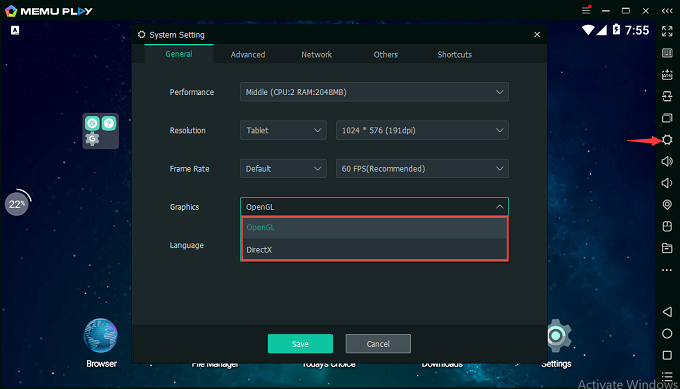
- #Set mousepad and keyboard controls for andy android emulator mac 720p#
- #Set mousepad and keyboard controls for andy android emulator mac install#
- #Set mousepad and keyboard controls for andy android emulator mac update#
- #Set mousepad and keyboard controls for andy android emulator mac for android#
#Set mousepad and keyboard controls for andy android emulator mac install#
You can check your web app and project at Android Studio or use your own computer to install a native software APK. The emulator begins a Virtual System Instance with its parameters after clicking Start, with expanded controls for changing machine rotations, geolocation, camera, fingerprint sensor, network latency, battery condition and more. Google APIs only include some device icons (which enables you to use Google apps like Maps, Gmail, etc.). ABIs similar in architecture to your workstation processor will be recommended but can be picked up by the emulator (with a shift in simulator performance). APIs are roughly 900 MB in file size each. Of different Android OS / API models, ABIs come in ARM, x86, and 86-64 types.
#Set mousepad and keyboard controls for andy android emulator mac 720p#
You need a camera that can record 720p videos if you want to work on Android 8.1 or higher.

#Set mousepad and keyboard controls for andy android emulator mac update#
You’ll require SDK update 26.1.1 or higher and a 64 or 86-bit PC / Laptop to work with an Android emulator. This is a short step forward: Hardware Requirements

You can configure the Android emulator easily. To update, please check the box and press OK. You’ll find an Android Emulator within this screen in the SDK Tools tab to install it from your Android Developer Studio console in Configure-> SDK Manager-> Android SDK. The Android Emulator is distributed independently of Android SDK software since the release of version 25.3.0.

Here’s a fast introduction to Android’s increasingly powerful emulator.Īlso Read: Activate Youtube via /activate Android Emulator (by Android Developer Studio)

The Android emulator will run simulated machines at speeds close to those of your CPU workstation with hardware acceleration. If your CPU supports this, you need the Android emulator to allow or disable a hypervisor to speed up the performance of the virtual computer. X86 Android ABIs are available now for the support of hardware acceleration on most computers. KVM (Virtual Machine-based Kernel) for Linux is available. Intel’s HAXM is a hypervisor for Windows and macOS. This is called virtualization allowed by the hardware. If the host and the guest systems are similarly told (i.e., x86 Android and x86 Intel machine images), QEMU shifts from the “binary traduction” portion and starts running the guest device directly on the host CPU.
#Set mousepad and keyboard controls for andy android emulator mac for android#
Prior to 2017, the emulator for Android Developer Studio had to transfer the ARM architecture of Android in order to match the Intel / AMD architecture used in common PCs.ĭeveloper Studio upgraded the simulator to allow virtualizing that is supported by hardware with version 25.3.0. Don’t Miss: Android x86 for PC Hypervisors


 0 kommentar(er)
0 kommentar(er)
